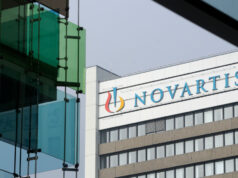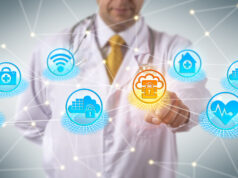
Not everyone has equal access to preventive healthcare, and it is broadly recognized that large segments of the population are frequently denied access to basic preventive healthcare because of geographic or economic barriers. For example, people working multiple jobs habitually don’t schedule appointments — routine or otherwise — because they can’t afford to take time off. Also, rural populations can face numerous barriers to healthcare, such as a shortage of local doctors or the need to travel long distances to medical facilities.
Understandably, the level of access to doctors and preventive healthcare could have a significant impact on people’s lives. A 2019 article in JAMA Internal Medicine found that a larger local supply of primary care physicians is commonly associated with lower mortality. Specifically, the study found that adding 10 primary care physicians per 100,000 people led to a longer life expectancy and reduced mortality resulting from cardiovascular, cancer, and respiratory issues.
For these reasons — and more — we’re now faced with a situation in which our healthcare system tends to focus on fixing acute problems once the damage is already done — what could be described as “sick-care” instead of healthcare. While perhaps more expedient at times, this type of reactive treatment can in many ways be much more costly, both to individuals and to society. To break us free from the sick-care cycle, we need to shift the focus from the reactive treatment of disease to proactive prevention and early detection — and thereby help ensure that people don’t get sick in the first place.
How technology can help
One technology that has tremendous potential to both broaden and improve access to preventive healthcare is wearable biosensing — more specifically, the continuous, non-invasive monitoring of multiple biomarkers from a smartwatch or wristband.
Today, more than a quarter of U.S. adults have a wearable device. This presents a major opportunity to improve healthcare. But for that opportunity to be realized, those devices must go beyond simply tracking heart rate and blood oxygen or letting you know how many steps you took today. They must extend the range of biomarkers that they can detect and measure to provide a wider view of what’s happening. For example, a wearable device should be able to monitor other key biomarkers like core body temperature, blood pressure, and hydration, which all help reveal important clues about an individual’s health. Moreover, regularly tracking biomarkers like alcohol, lactose, and glucose from a wearable could help people manage certain conditions more effectively. Having the ability to track a multitude of biomarkers on a routine basis would go a long way toward ushering in a new era of preventive care.
The reasoning behind this is simple: Proactive healthcare would be far easier with round-the-clock, real-time monitoring that empowers individuals to know what’s happening in their bodies at any given time. This is just not feasible in our current healthcare system. When we go for an annual checkup and get a lab test, we get only a narrow snapshot of our body at one specific point in time.
Such a limited view would be analogous to walking into a movie theater for 30 seconds and then having to explain what the movie is about. If you see just the right scene at just the right time, you may be able to guess correctly, but chances are that you’ll have an incomplete picture. But what if we could monitor our health daily and get instant alerts and early warnings if anything goes amiss, such as a sudden spike in temperature or blood pressure?
The future of healthcare will be built upon technological advances that provide people with information about their bodies and then allow them to use that knowledge to better manage their health. Simply put, if you have better information about what’s happening, you’ll make better decisions. For instance, if you know your blood pressure is spiraling out of control, you could do something about it — maybe take the day off and visit your doctor. Armed with more timely information, you could prioritize your actions based on early indications instead of learning about a condition after it becomes serious.
An ounce of prevention
Another segment of the population that often faces limited access to preventative healthcare is the elderly. In an ideal society, seniors would continue to live comfortably at home and not need to move into a skilled nursing facility. This would be better for individuals and the healthcare system in general. The median cost of a nursing home’s private room is around $106,000 a year.
But our society is not ideal. Consider that a significant cause of hospitalization among the elderly is simple dehydration. Older people, in general, are more prone to losing their sensation of thirst. Once they become dehydrated, the symptoms look very similar to dementia, making it hard for them to recognize and address the problem by drinking fluids.
Here again, sensor technology and medical wearables can help. Providing the elderly with a way to measure their hydration noninvasively and continuously would be a game-changer. It could be done with a photonics-based sensor that measures water concentration changes in the human body. Such a hydration-assessment technique would give the elderly the ability to understand their hydration status in an unprecedented way. At a glance, they could determine how much they should drink to keep adequately hydrated—and avoid becoming dehydrated in the first place.
As healthcare providers explore new initiatives to improve preventative care, there is an opportunity to offer health monitoring wearables as part of the services provided to patients. Despite the initial up-front cost, giving biomarker sensing devices to patients would be far less expensive than having to treat acute issues when they arise. The potential cost savings are enormous. McKinsey & Company found that better health for all could add $12 trillion to global GDP by 2040. Further, biosensing wearables have the potential to improve the patient experience, reduce the risk of hospitalization, and possibly even save lives.
The old adage that “information is power” is truer than ever, especially when it comes to managing our health. Continuous health monitoring tools could play a critical role in delivering essential information to everyone —giving people the power to make better choices for their long-term health, even if their doctor may be miles away.








